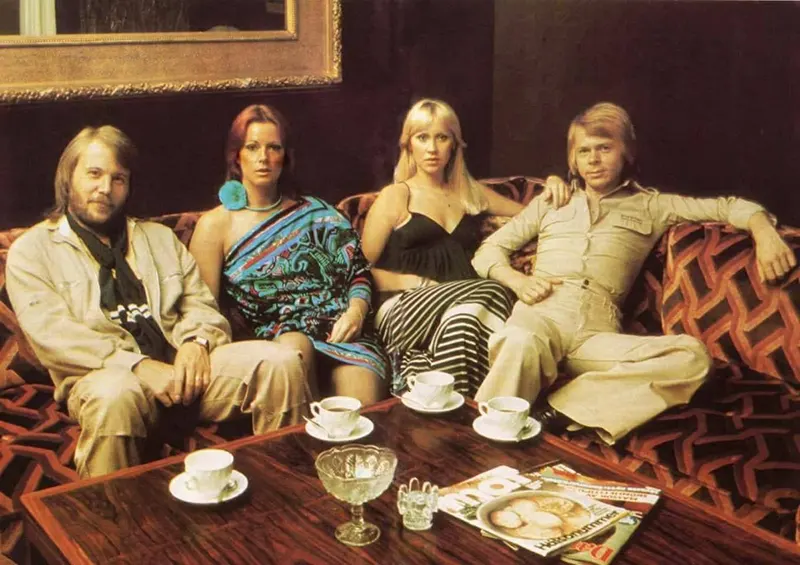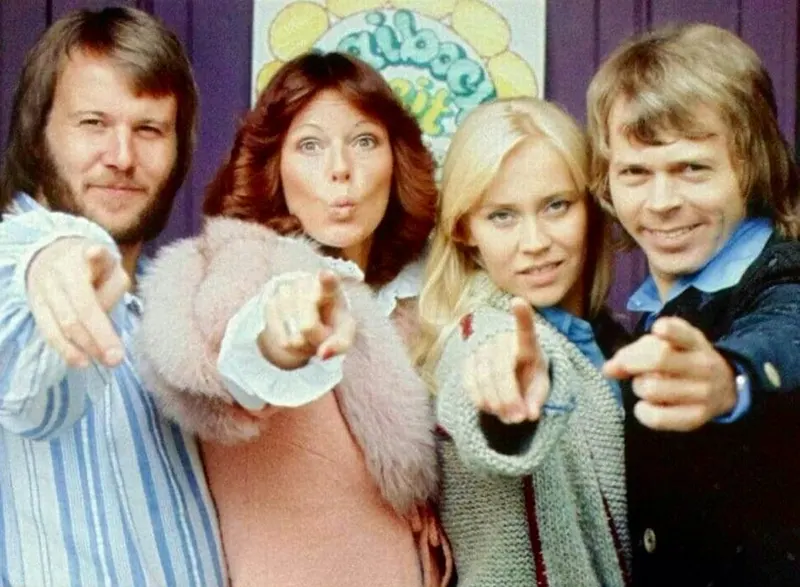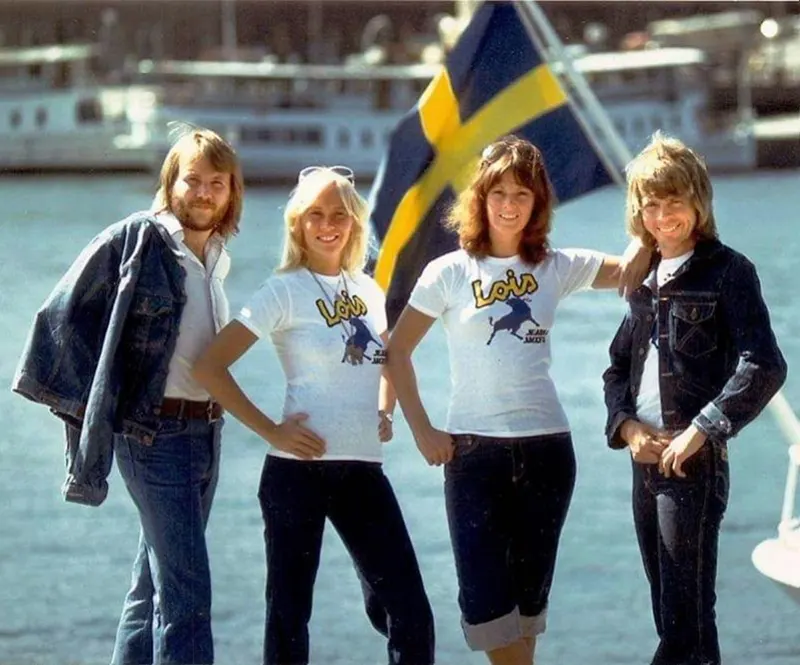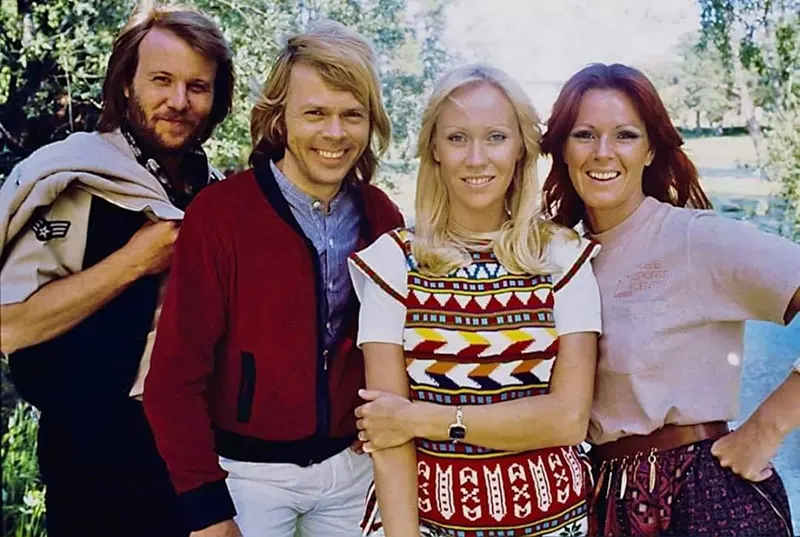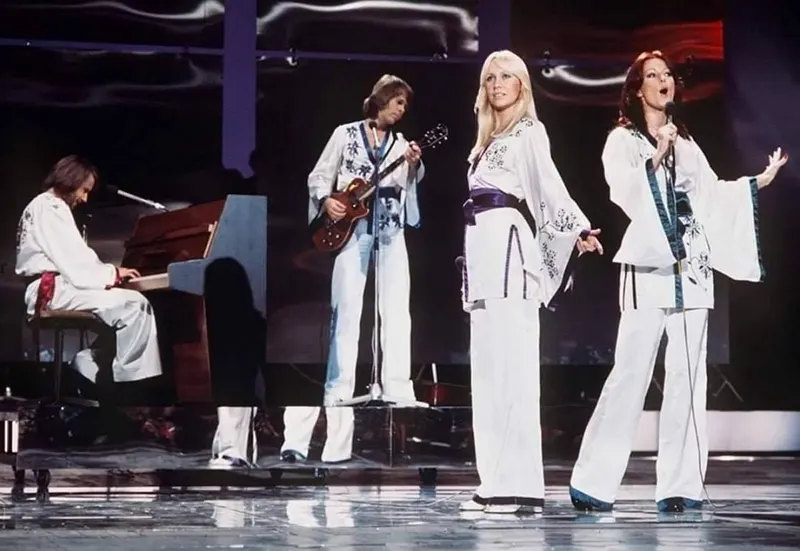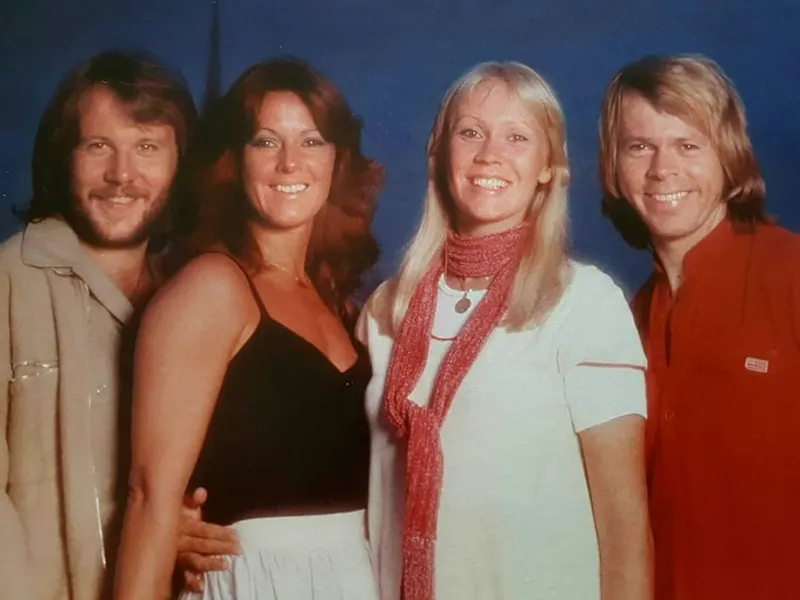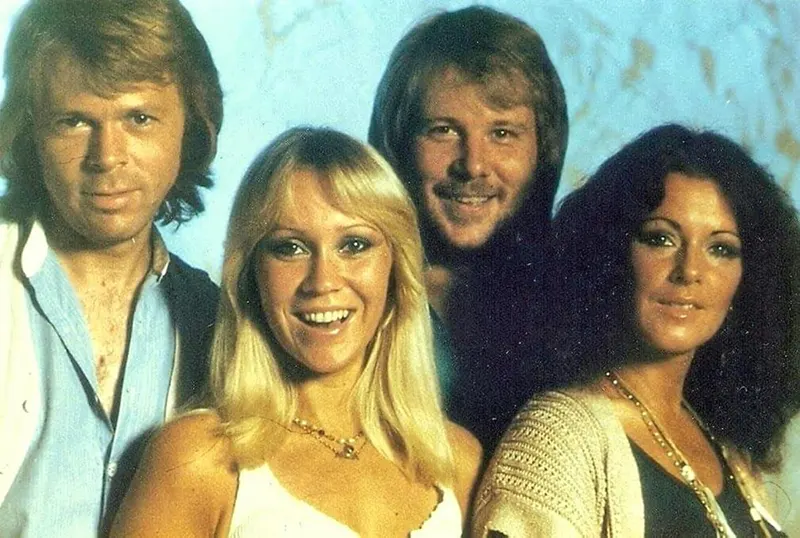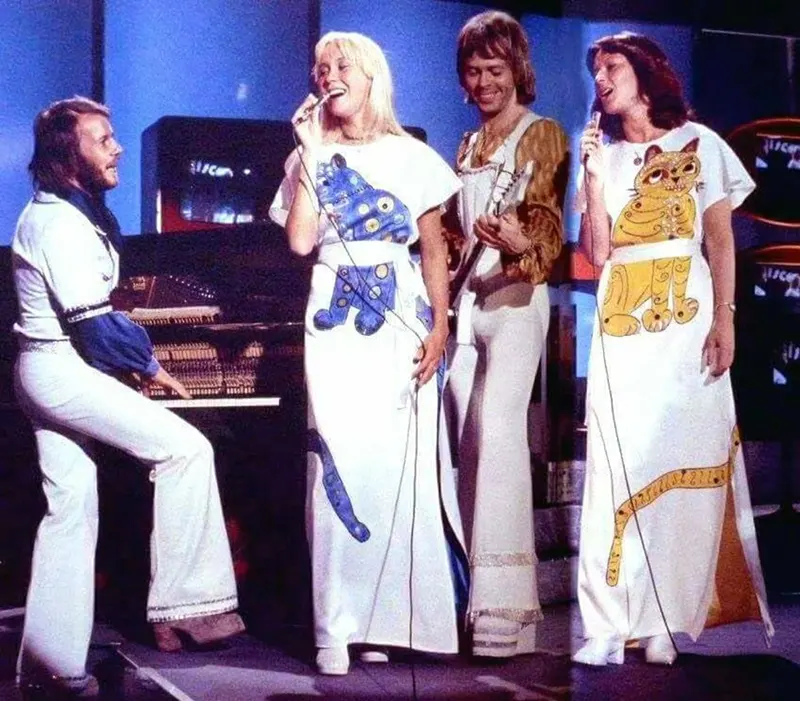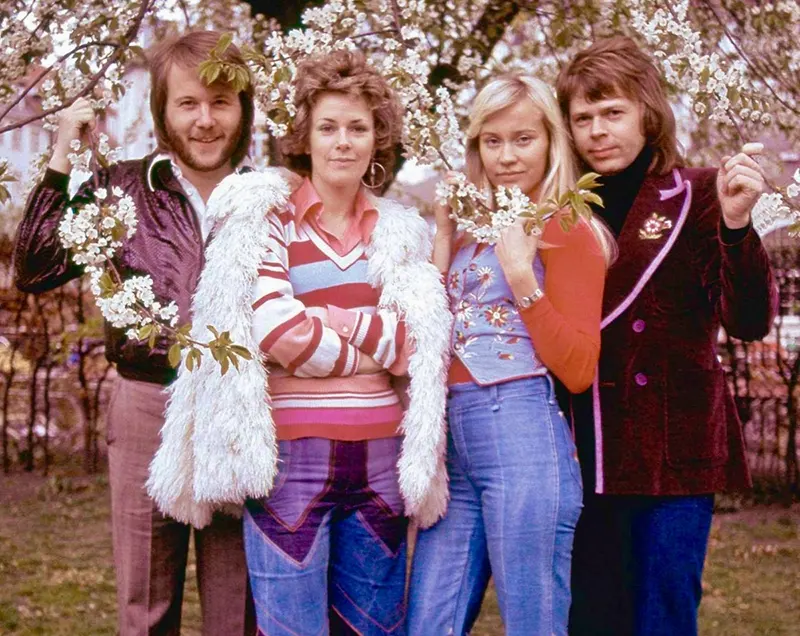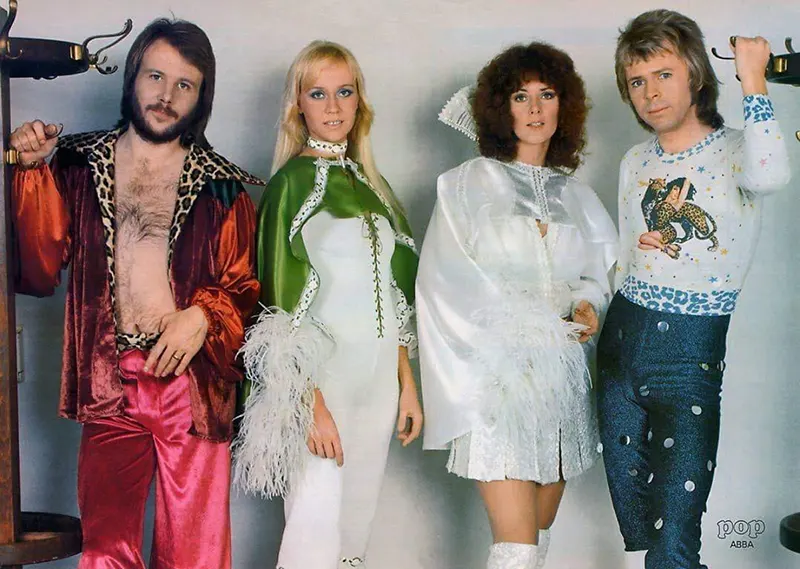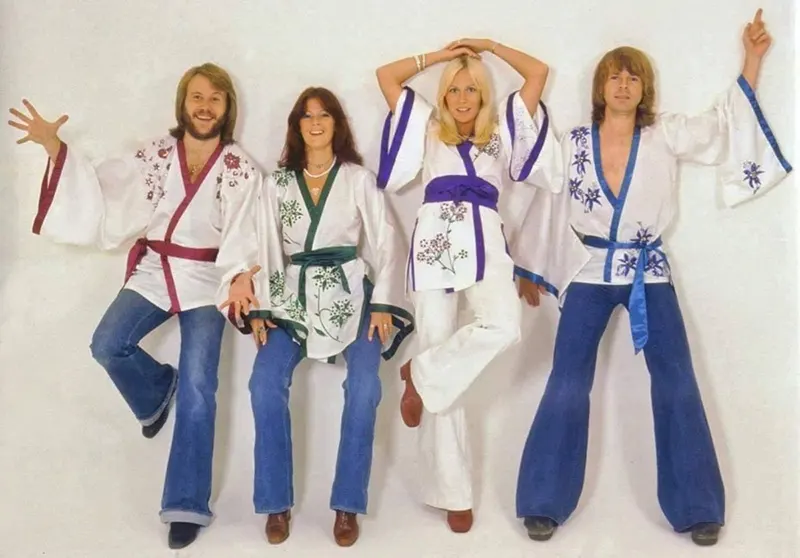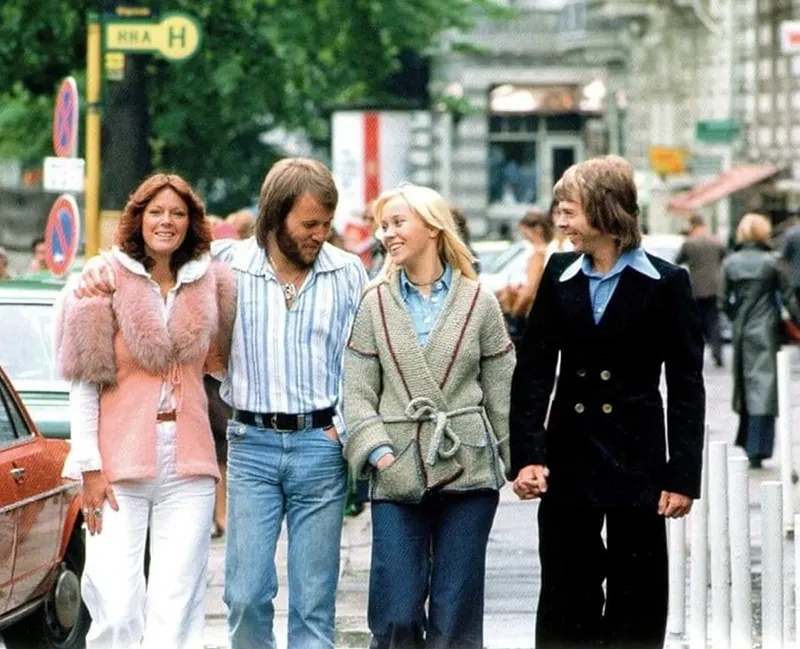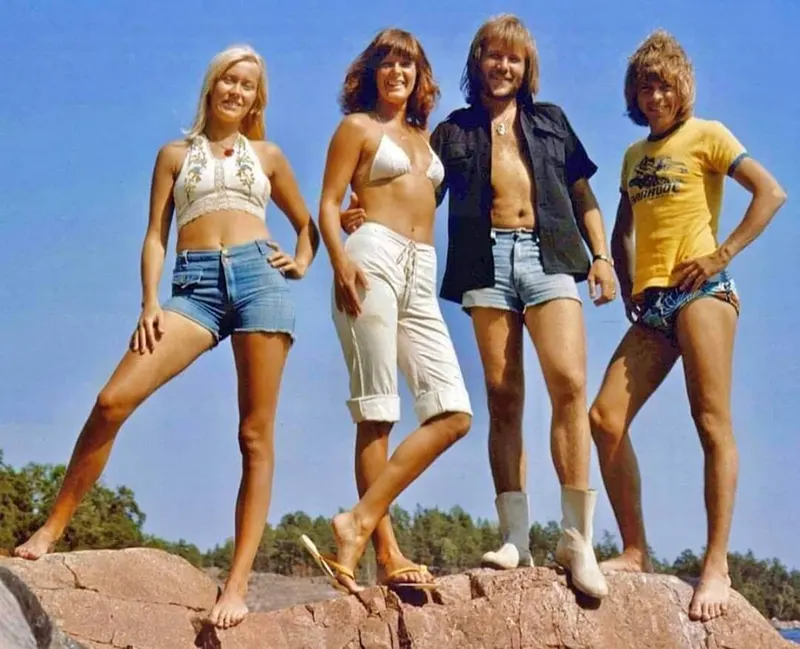Members included songwriter and keyboard player Benny Andersson, songwriter and guitarist Björn Ulvaeus, and vocalists Agnetha Fältskog and Anni-Frid Lyngstad. The group’s name is an acronym of the first letters of their first names arranged as a palindrome. One of the most popular and successful musical groups of all time, they became one of the best-selling music acts in the history of popular music, topping the charts worldwide from 1974 to 1982. The group began to take shape in 1969, when Andersson and Ulvaeus, who had previously collaborated on a number of folk and pop projects, met Lyngstad and Fältskog. In addition to working together musically, the four paired off romantically, with Andersson becoming involved with Lyngstad and Ulvaeus dating Fältskog. The quartet debuted as the cabaret act Festfolk, a name chosen to play on two words with nearly identical pronunciations in Swedish: festfolk, meaning “party people,” and fästfolk, a 1970s slang term for “engaged couples.” Ulvaeus and Fältskog were married in 1971, and Andersson and Lyngstad followed suit in 1978. While Festfolk failed to gain a following in Sweden, the song “People Need Love,” which the group recorded as Björn & Benny, Agnetha & Anni-Frid, was a modest hit in 1972. The following year the foursome finished third in the Swedish qualifying round of the Eurovision Song Contest, with the single “Ring, Ring.” Encouraged by that success and dubbed ABBA—an acronym derived from the members’ first names—by the group’s manager, Stig Anderson, the band returned to Eurovision in 1974 and captured the top prize with the song “Waterloo.” The resulting single served as the anchor for the album of the same name, released that year. More than a year after the triumph at Eurovision, ABBA (1975) truly established the group as a global pop phenomenon. The singles “Mamma Mia” and “S.O.S.” were massive hits in Europe, Australia, and North America, and the band embraced the emerging music video format to capitalize on the quartet’s shared charisma. ABBA’s 1977 release, Arrival, reached the United States at the height of the disco craze, and it provided the group with its sole American number one single—the catchy and undeniably club-friendly “Dancing Queen.” The Album (1978) marked a departure of sorts: although its standout single, “Take a Chance on Me,” was a brilliant, if straightforward, pop anthem, other tracks hinted at an art rock influence, and the album’s second side was dominated by a “mini-musical” titled “The Girl with the Golden Hair.” With the increase of their popularity, their personal lives suffered, which eventually resulted in the collapse of both marriages. The relationship changes were reflected in the group’s music, with latter compositions featuring darker and more introspective lyrics. After ABBA separated in December 1982, Andersson and Ulvaeus continued their success writing music for multiple audiences including stage, musicals, and movies, while Fältskog and Lyngstad pursued solo careers. ABBA are among the best-selling music artists in history, with record sales estimated to be between 150 million to 385 million sold worldwide and the group were ranked 3rd best-selling singles artists in the United Kingdom with a total of 11.3 million singles sold by 3 November 2012. ABBA were the first group from a non-English-speaking country to achieve consistent success in the charts of English-speaking countries, including the United Kingdom, Australia, United States, Republic of Ireland, Canada, New Zealand and South Africa. They are the best-selling Swedish band of all time and the best-selling band originating in continental Europe. ABBA had eight consecutive number-one albums in the UK. The group also enjoyed significant success in Latin America and recorded a collection of their hit songs in Spanish. ABBA were inducted into the Vocal Group Hall of Fame in 2002. The group were inducted into the Rock and Roll Hall of Fame in 2010, the first and only recording artists to receive this honour from outside an Anglophonic country. In 2015, their song “Dancing Queen” was inducted into the Recording Academy’s Grammy Hall of Fame.
(Photo credit: Wikimedia Commons / Britannica / Pinterest / Flickr). Notify me of new posts by email.
Δ Subscribe




